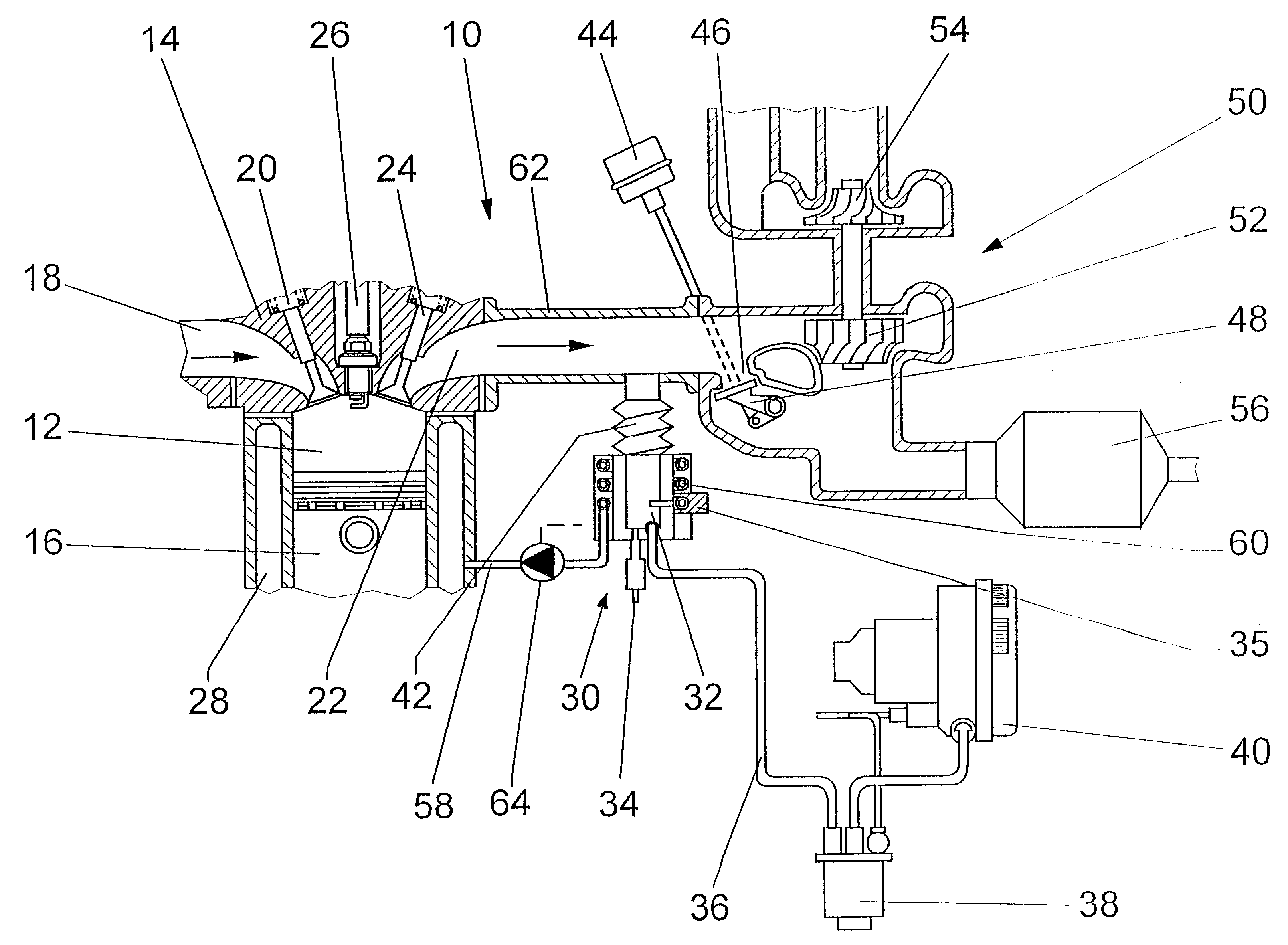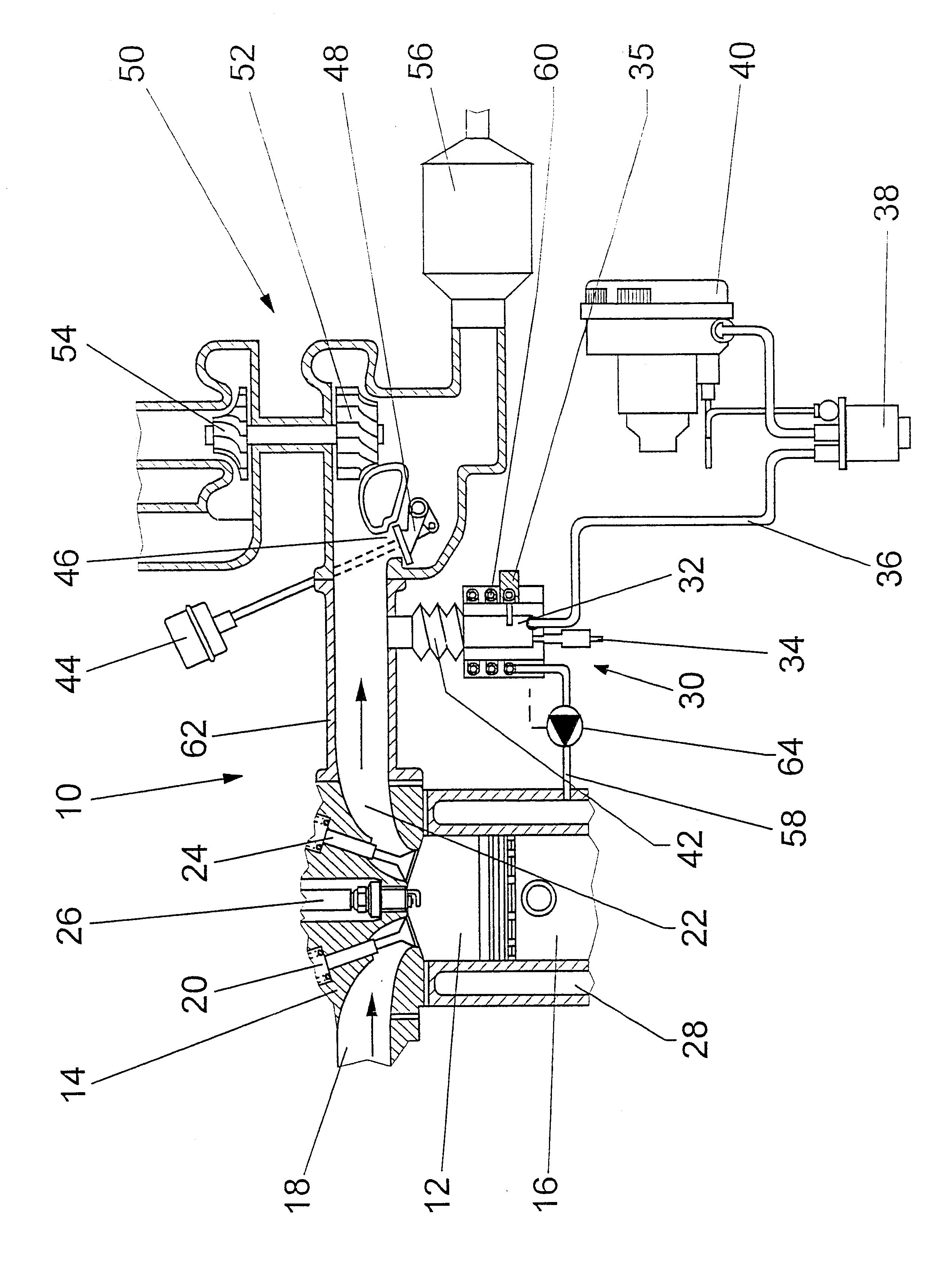Heating system
a technology of heat exchanger and coolant input, which is applied in the direction of machines/engines, heating types, lighting and heating apparatus, etc., can solve the problems of increased fuel consumption and exhaust emissions, increased fuel consumption, and slight heat loss
- Summary
- Abstract
- Description
- Claims
- Application Information
AI Technical Summary
Benefits of technology
Problems solved by technology
Method used
Image
Examples
Embodiment Construction
The internal combustion engine 10 has cylinders 12, which between pistons 16 and a cylinder head 14 form work chambers, to which air is delivered via inlet conduits 18. Via outlet conduits 22, the piston 16 expels the exhaust gas into an exhaust manifold 62. The inlet conduits 18 and the outlet conduits 22 are controlled by inlet valves 20 and outlet valves 24, respectively. An ignition aid 26, in the form of a spark plug in the case of the Otto process, initiates the combustion of the fuel-air mixture in the cylinder 12, while an ignition aid 26, in the form of a glow plug in the diesel process, serves to preheat the combustion air.
A combustion chamber 32 of a heater 30 is connected to the exhaust manifold 62 of the engine 10 via an exhaust line 42. The exhaust line 42 is expediently embodied as a metal bellows, so that it can compensate for different thermal expansions as a consequence of different temperatures between the combustion chamber 32 and the exhaust manifold 62. Fuel is...
PUM
 Login to View More
Login to View More Abstract
Description
Claims
Application Information
 Login to View More
Login to View More - R&D
- Intellectual Property
- Life Sciences
- Materials
- Tech Scout
- Unparalleled Data Quality
- Higher Quality Content
- 60% Fewer Hallucinations
Browse by: Latest US Patents, China's latest patents, Technical Efficacy Thesaurus, Application Domain, Technology Topic, Popular Technical Reports.
© 2025 PatSnap. All rights reserved.Legal|Privacy policy|Modern Slavery Act Transparency Statement|Sitemap|About US| Contact US: help@patsnap.com


